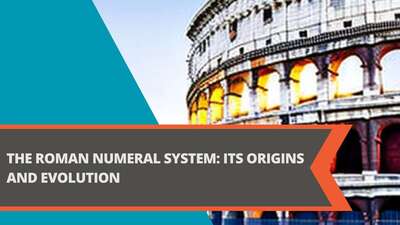What is I in Roman Numerals?
- Definition of Roman Numerals
- Formula for Writing Roman Numerals
- Examples of Roman Numerals
- Explanation of I in Roman Numerals
- Question and Answer FAQ
- What is the history of Roman numerals?
- How do you write the number zero in Roman numerals?
- What are some common uses of Roman numerals?
- Why do we still use Roman numerals?
- Conclusion
Roman numerals are an ancient system of numerical notation that uses letters to represent numbers. In this system, I is the symbol used to represent the number one. Although the use of Roman numerals has largely been replaced by the Arabic numeral system, they are still used in a variety of contexts, including clock faces, chapter and volume numbers in books, and movie credits.
Definition of Roman Numerals
Roman numerals are a numerical system that originated in ancient Rome. This system uses a combination of letters from the Latin alphabet to represent numerical values. The system is based on a combination of additive and subtractive principles, and certain letters are used to represent specific values.
Each letter represents a value, with I representing one, V representing five, X representing ten, L representing fifty, C representing one hundred, D representing five hundred, and M representing one thousand. These symbols can be combined to represent larger values.
Formula for Writing Roman Numerals
There are certain rules for writing Roman numerals that must be followed in order to correctly represent numerical values. The basic principles are:
- Letters are placed from left to right in order of decreasing value.
- The value of a letter is added to the value of the letters that come before it.
- A letter can only be used three times in a row before a smaller value is subtracted from it.
- The letters I, X, and C can be used as subtractive symbols, meaning that they can be placed before a larger value to subtract from it.
- The letter V, L, and D cannot be used as subtractive symbols.
By following these rules, it is possible to represent any number using Roman numerals.
Examples of Roman Numerals
Here are some examples of Roman numerals and their corresponding Arabic numeral values:
| Roman Numeral | Arabic Numeral |
|---|---|
| I | 1 |
| IV | 4 |
| IX | 9 |
| XV | 15 |
| XXVIII | 28 |
| XLVII | 47 |
| LXIX | 69 |
| CXCI | 191 |
| CDXLVIII | 448 |
| MCMXCIV | 1994 |
As you can see from these examples, Roman numerals can be used to represent a wide range of numerical values.
Explanation of I in Roman Numerals
I represents the number one in Roman numerals. It is the first letter of the Roman numeral system and is the building block for all larger values. By combining I with other Roman numeral symbols, it is possible to represent any integer value in the Roman numeral system.
The letter I can be used on its own to represent the number one, or it can be used in combination with other letters to represent larger values. For example, II represents the number two, III represents the number three, and so on. By adding a bar above the letter, as in Ī, the value is multiplied by one thousand, so Ī represents the number one thousand.
It is important to note that I cannot be used to represent values larger than one. This is because Roman numerals use a base-ten system, meaning that values are represented using symbols that are multiples of ten. The symbols V, X, L, C, D, and M represent multiples of five and ten, allowing for the representation of larger values. However, the letter I only represents one, so it cannot be used to represent larger values on its own.
Question and Answer FAQ
What is the history of Roman numerals?
Roman numerals were developed in ancient Rome and were used throughout the Roman Empire. They were used for a variety of purposes, including counting and record-keeping. The Roman numeral system is still used today in a variety of contexts, including clock faces, chapter and volume numbers in books, and movie credits.
How do you write the number zero in Roman numerals?
There is no symbol for zero in the Roman numeral system. Instead, the concept of zero is represented by the absence of any numerals. For example, the number 10 is represented by X in Roman numerals, while the number 100 is represented by C. The absence of any numerals between X and C represents the value of 90, which is 100 minus 10.
What are some common uses of Roman numerals?
Roman numerals are still used in a variety of contexts, including clock faces, chapter and volume numbers in books, and movie credits. They are also used in the names of monarchs and popes, with a monarch's regnal number often being represented in Roman numerals. Roman numerals are also sometimes used in numbering the Super Bowls.
Why do we still use Roman numerals?
Although the use of Roman numerals has largely been replaced by the Arabic numeral system, they are still used in certain contexts because of their historical and cultural significance. In some cases, Roman numerals may also be used for aesthetic or design purposes, as they can give a classic or timeless look to a design or object.
Conclusion
I is the symbol used to represent the number one in the Roman numeral system. By following the formula and rules for writing Roman numerals, it is possible to represent any integer value using this system. Although the use of Roman numerals has largely been replaced by the Arabic numeral system, they are still used in a variety of contexts today, and their historical and cultural significance continues to make them a popular choice for certain applications.
If you have any further questions about Roman numerals or their use, please refer to the FAQ section above or consult a reference book on the topic.







